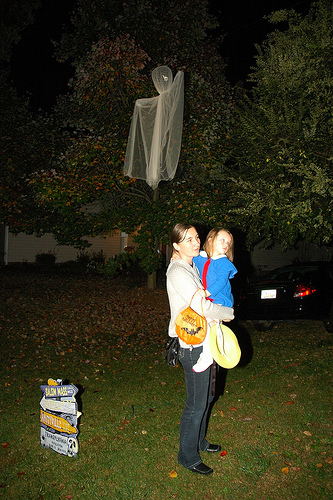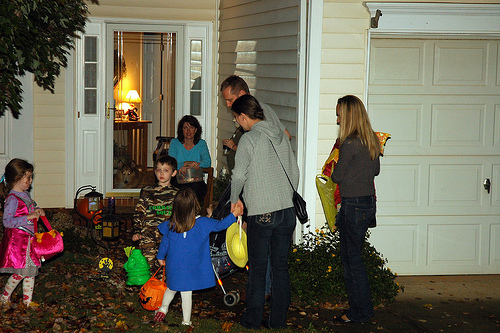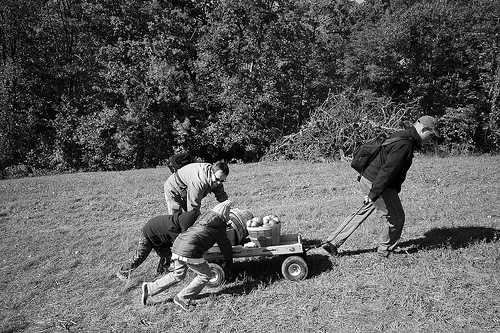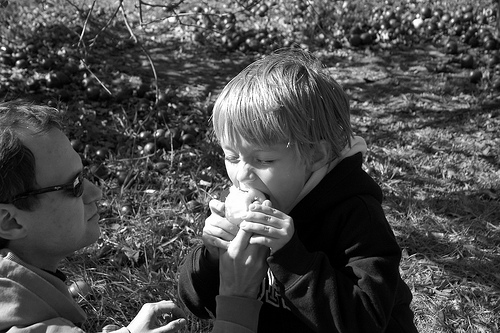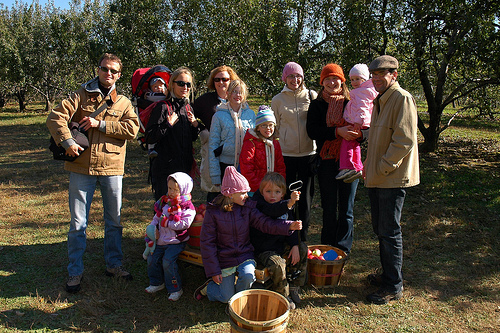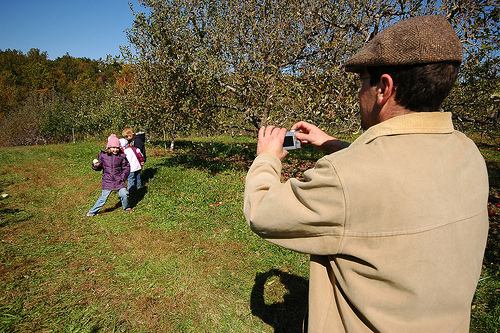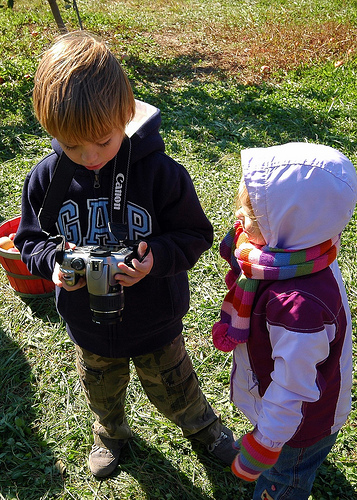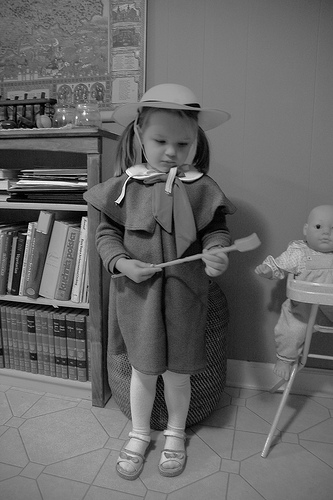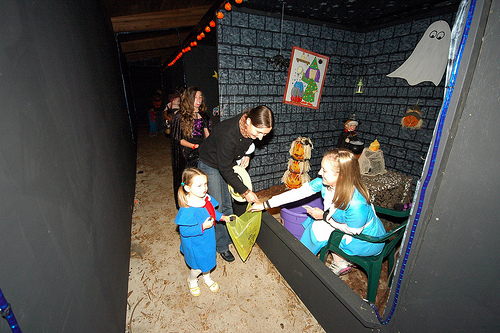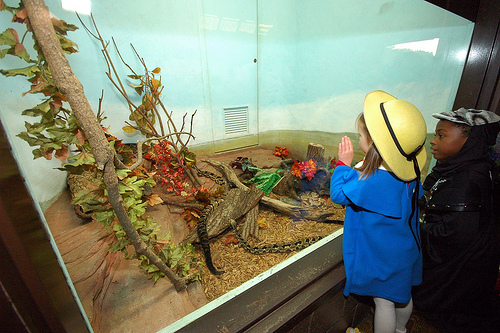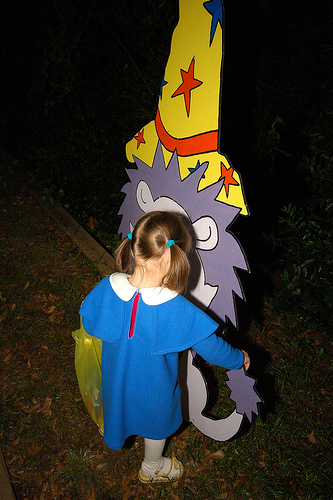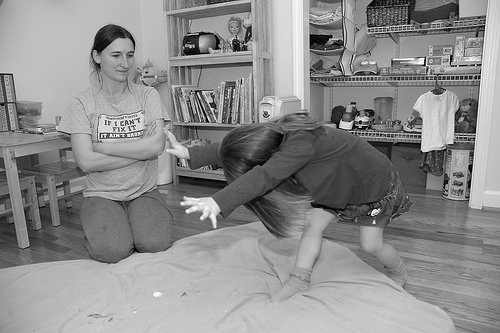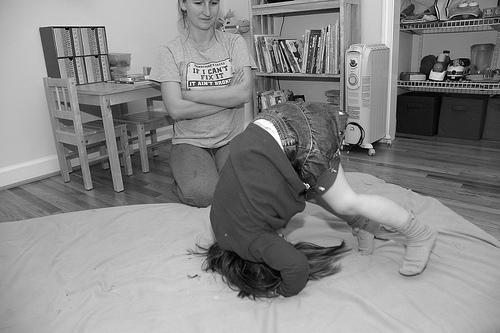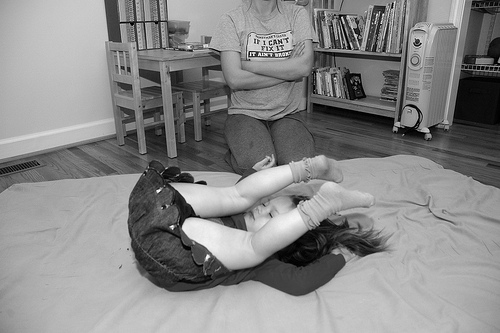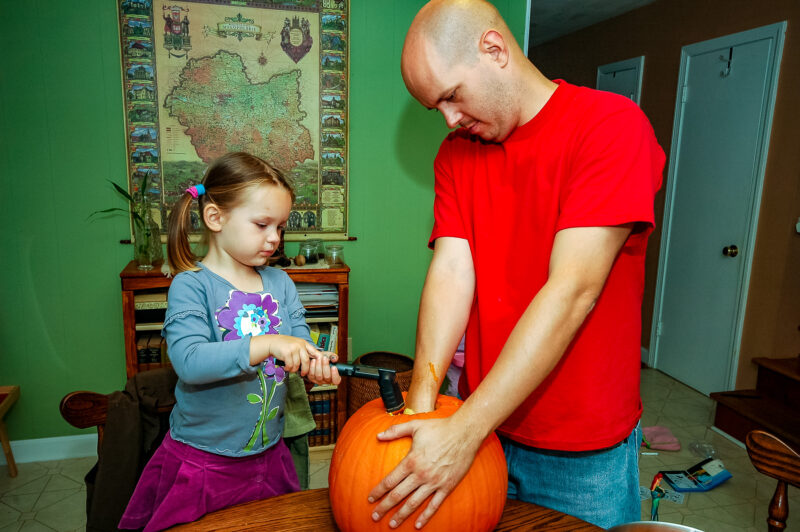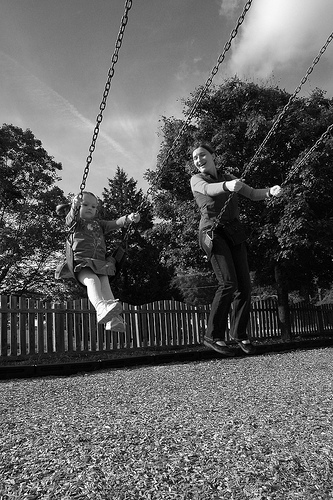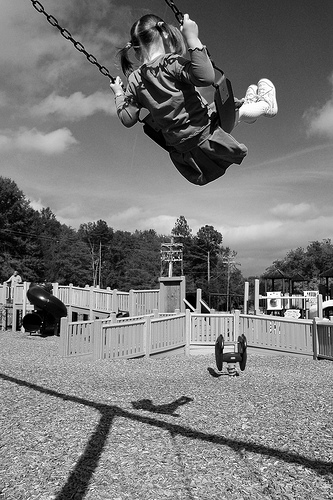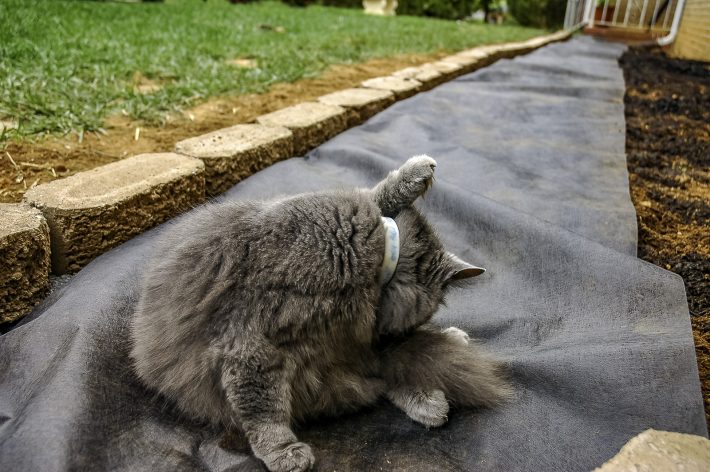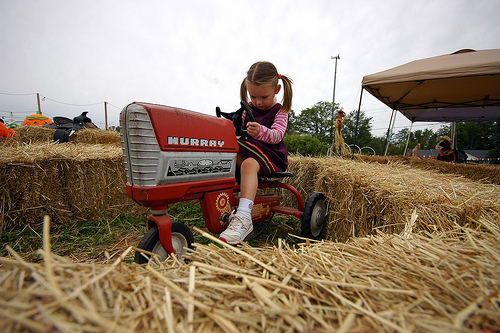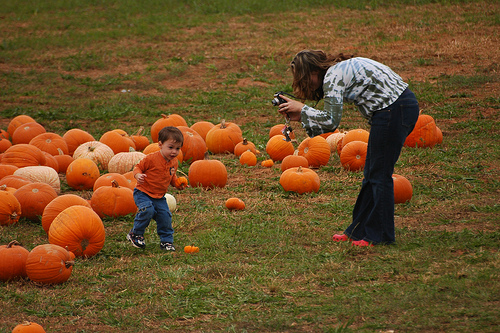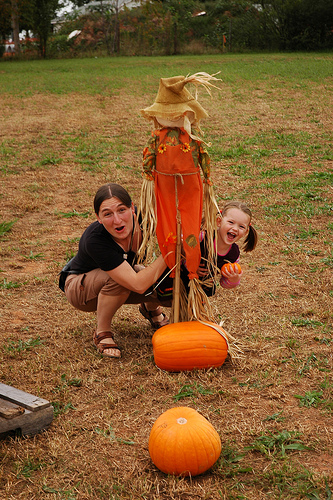This time of year comes around and I begin thinking once again of all the different ways I’ve experienced it.
As a youth, I avoided it. Halloween was bad, just another marker of evil in an evil world. Our church explained it along lines like this:
Throughout mankind’s turbulent history, Satan has always managed to find a way to separate man from God (Isa. 59:1-3) by tempting him into various sins and false ideas that may seem right–that may seem innocent and harmless–but are in direct opposition to God! […] Even when the Roman Catholic Church attempted to gloss over strange pagan practices of the Celts and Romans, it introduced its own false, Satanic doctrines, passing them off as Christian. Halloween is riddled with deceit and falsehoods. (Source)
In Poland, I experienced All Saints’ Day: quiet reflection, talking with family and friends, and candle-light cemeteries.

And now, with a child of my own, I experience trick-or-treating for the first time. I can’t say that it’s something all that thrilling: not being a big candy fan myself, I can see that I verily easily lived without the experience. The thrill is vicarious.
This evening, we took L for an evening of trick-or-treat in a well-heeled neighborhood where the houses are large and packed closely — lots of return on the walking investment, and there were literally hundreds of families there.
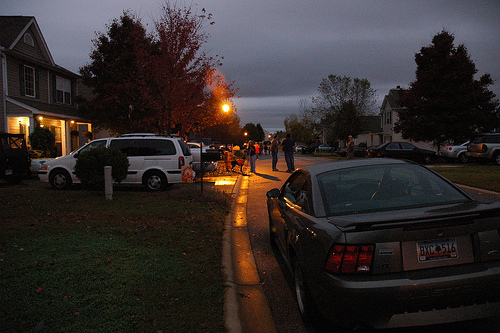
The whole neighborhood was decorated, with some going to the extreme.


The hosts made everyone feel at home — even the dads who were upset about missing the game.
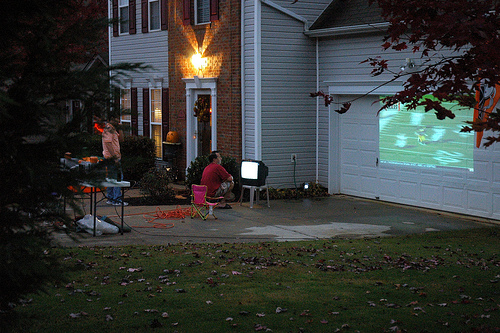
But none of us had any interest in the game. We — specifically L and her friend — were there for one thing alone.

Almost every house had its front porch light on, so the candy was bountious. L’s Jack-o-lantern basket was literally too heavy for her to carry. When we got home, we counted: 60+ pieces. Enough for two months.

